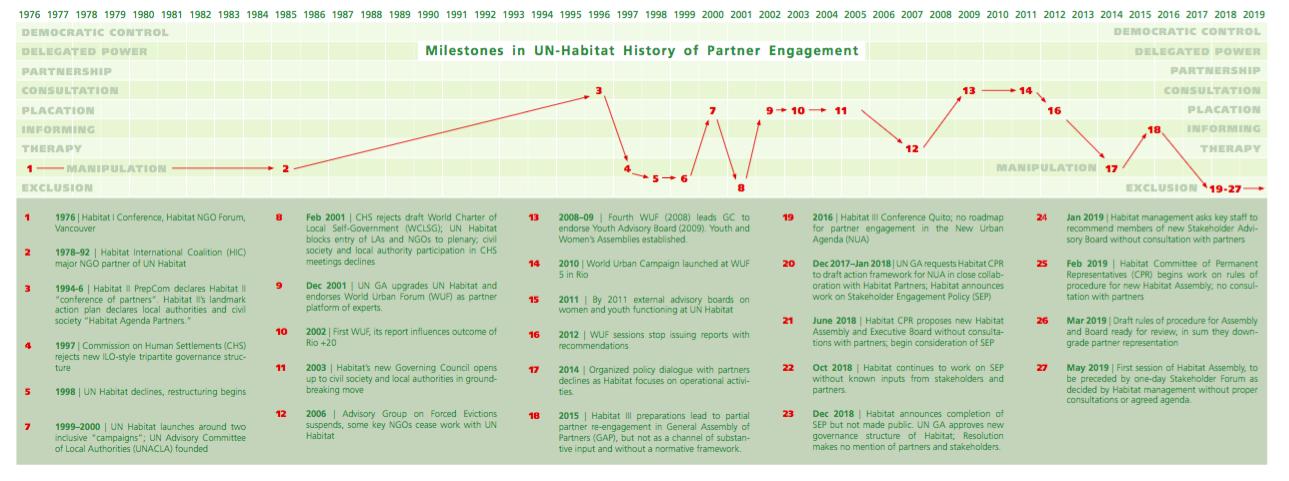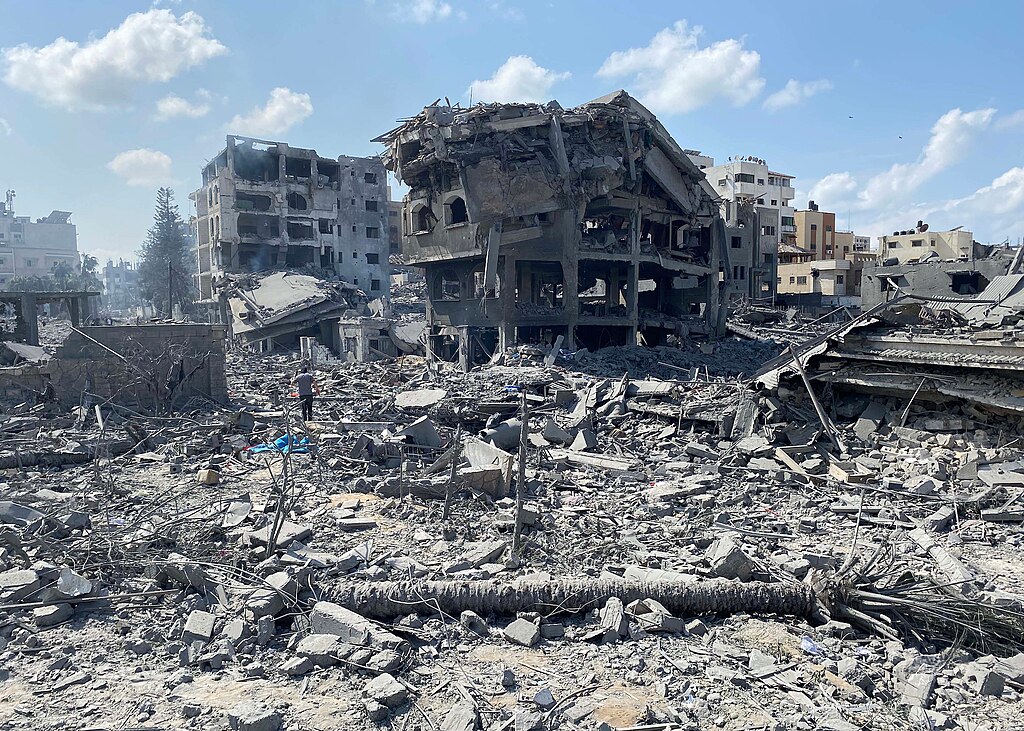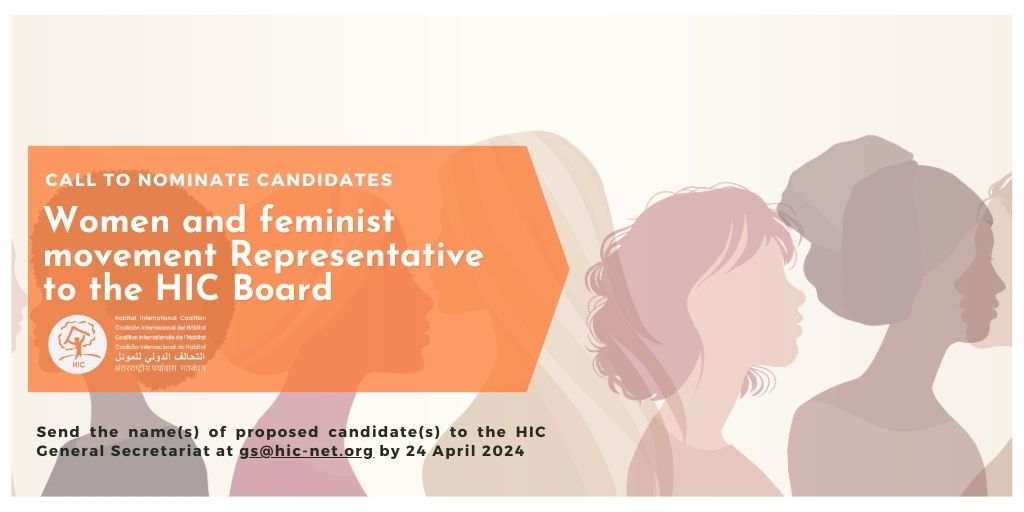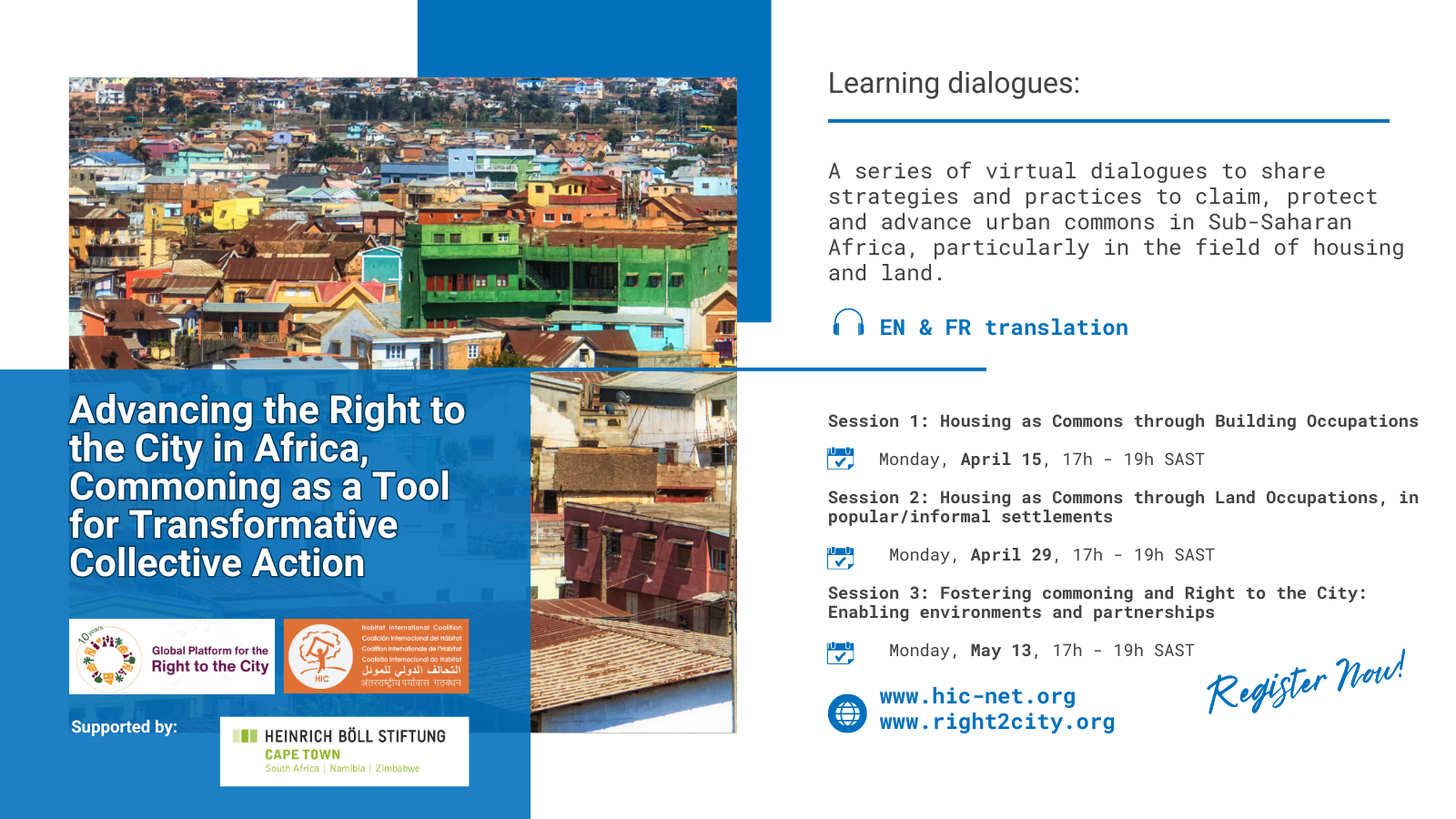
Evolution of UN-Habitat Partner Engagement over the last 40 years
On Wednesday,May 15th, Habitat International Coalition and the Housing and Land Rights Network (HLRN) have presented an open letter to the UN Habitat Executive Director, Maimunah Mohammad Sharif, demanding more transparency about the new developments concerning the participation of civil society actors and partners under the overall decision-making process ofUN-Habitat. The open letter was presented under the context of the upcoming first UN-Habitat Assembly (27-31 of May) and the development of a new Stakeholder Engagement Policy (SEP) and a Stakeholder Advisory Group (SAG) over the last months.
UN Habitat has a long, rich and pioneering history as an innovator in the inclusion of a wide range of civil society and local government partners and stakeholders in both its governance and programme formulation and execution spanning several decades. UN Habitat’s work with partners grew significantly throughout the last decades, which greatly increased the agency’s reach and impact, and produced many successful programmes and activities to advance sustainable urbanization worldwide. That gave UN Habitat a global profile it did not previously have, within or outside the United Nations system. Given that rapid growth, from 2009 onward, UN Habitat attempted to structure and organize these growing networks in order to maximize their potential. UN Habitat now can boast more than 6,000 local, national and international partners with which it engages in various ways.
The first meeting of the UN Habitat Assembly will be critical, where it will adopt its rules of procedures and define the role of partners and other stakeholders. HIC has remained dedicated to upholding and advancing the principles of the Habitat Agenda and NUA, and to the progressive evolution of multi-stakeholders partnerships toward their monitoring and implementation. HIC looks forward to an Assembly that is open and welcoming to partners and other stakeholders, expanding their participation both in the Assembly and the Executive Board beyond what was the norm in the previous Governing Council. HIC looks forward also to stakeholders’ and other partners’ inclusion in the decision-making processes for implementation of the NUA through the UN Habitat work programme. Such crucial roles and functions should not be relegated to a small hand-picked group, or a hierarchical and executive-driven structure, but through a self-organized mechanism through which constituent groups can express their substantive contributions to NUA implementation and, thereby also, achieving the SDGs.
For this, HIC and HLRN understand that it is fundamental to have clear and transparent information about the new Stakeholder Engagement Policy (SEP) and a Stakeholder Advisory Group (SAG) mechanisms in advance of the Habitat Assembly. This is of upmost importance so HIC and other stakeholders are be able to contribute to the preparations and debates of the Assembly and ensure successful outcomes, including an inclusive, democratic and durable partnership mechanism moving forward.
Given UN Habitat’s wide engagement with partners, the formulation of the SEP and the SAG should follow an open process that casts a wide net, so as to maximize the effectiveness and global scope of the Advisory Group and capture the experience that reflects the pooling of assets and expertise across the system, as the longer-term positioning of the UN Development System promises.
Despite the advances of the last decades and UN Habitat’s pioneer role in terms of stakeholder engagement, this has not been a linear process, as it can be seen in the material prepared by HIC Charting the UN Habitat-Stakeholder Engagement. It is fundamental to secure that the new mechanisms and developments contribute to building a more-transparent and inclusive process of engaging partners and stakeholders that expands upon the achievements and lessons of the past and keeps pace with the ever-demanding future.
You can access all of the documents here:
Full open letter to UN Habitat Executive Director
Chart on UN Habitat-Stakeholder Engagement
Key Milestones in UN Habitat’s Cooperation with Stakeholders


